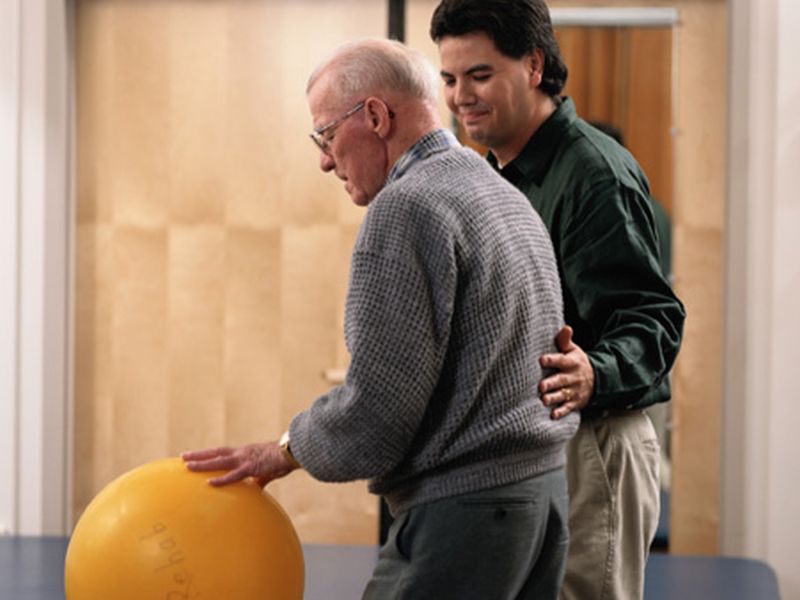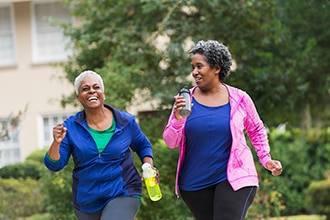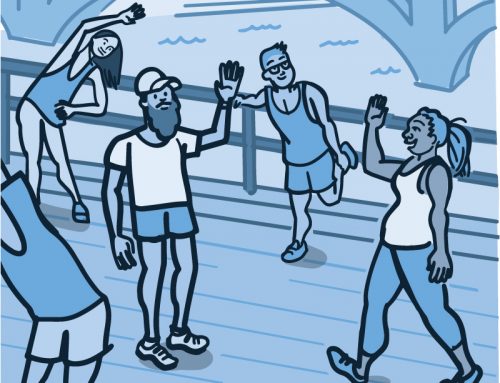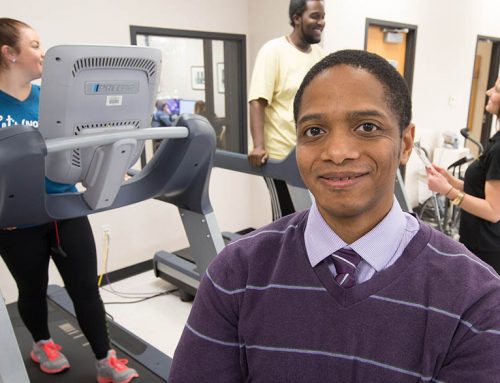
MONDAY, Aug. 14, 2017 (HealthDay News) — If you want to stay as fit as possible well into your 80s, the answer may be as simple as standing on your own two feet.
New research shows that a standing-exercise program is more effective for older adults than commonly used seated exercises.
Among nearly 300 participants who were an average age of 80, those who took part in a standing-exercise program were able to walk faster and farther than those in a seated-exercise program, researchers reported.
“Older adults who are interested in improving their mobility should consider participating in a group-based exercise program like ‘On the Move,’ ” said lead researcher Jennifer Brach.
“The timing and coordination exercises are designed to be more challenging for participants, but they are important for walking and can improve mobility,” she said.
Brach is an associate professor in the department of physical therapy at the University of Pittsburgh’s School of Health and Rehabilitation Sciences.
The standing program was designed to enhance the motor skills and muscle control needed for walking. It includes a warm-up, stepping patterns, walking patterns, strengthening and a cool-down, Brach said.
The other program was done while seated and focused on strength, endurance and flexibility, and included a warm-up, arm and leg strength exercises, aerobic activities and a cool-down.
Those in the standing-exercise program showed a small increase in their speed and distance in walking for 6 minutes, while those in the seated-exercise class didn’t show as much improvement.
“The On the Move program was more effective at improving mobility than the usual seated program,” Brach said.
Among those who took part in the study, many had several chronic conditions and impaired mobility. Approximately one-third reported a fear of falling and had a history of falls, she added.
“Group-exercise programs meant to improve mobility should include timing and coordination exercises, which are important for walking,” Brach said.
For the study, Brach and her colleagues randomly assigned 32 independent living facilities, senior apartment buildings and senior community centers to the standing-exercise program or to the seated-exercise program.
In the 16 sites assigned to the standing-exercise program, 152 people took part. In the sites selected for the seated-exercise program, 146 participated, according to the report.
For both programs, participants were aged 65 or older, able to walk independently with a speed of at least one mile per hour, and were medically stable.
In each program, classes were 50 minutes long and were given twice a week for 12 weeks. All had 10 or fewer people per class.
In all, 142 people completed the On the Move program, and 139 completed the seated program. Attendance at the seated class was better than at the standing classes (65 percent versus 50 percent), the researchers said.
In addition, those in the standing-exercise classes were more likely to experience falls, fatigue and pain. None of these occurred in the seated-exercise classes, the researchers found.
The report was published online Aug. 14 in the journal JAMA Internal Medicine.
Samantha Heller is a senior clinical nutritionist and exercise physiologist at New York University Medical Center in New York City. She said, “All exercise is beneficial for people of all ages.”
However, Heller noted, it is difficult to compare outcomes of a weight-bearing, coordination exercise program with seated-exercise programs, as they involve very different skills.
“As we age, our ability to balance becomes less keen, so we need to find ways to practice and sharpen our balance skills, which can be challenging from a seated position,” she explained.
Regular exercise has been shown to improve thinking skills, mood, sleep, circulation and social activity, as well as reduced risks for falls and chronic diseases, such as cardiovascular disease, cancer, dementia, type 2 diabetes and high blood pressure, Heller added.
“For older people for whom walking is impaired, seated-exercise routines are great,” Heller said. “For those who can walk, multi-pronged programs targeting endurance, strength, balance and flexibility are optimal.”
Aging well includes regular exercise in whatever way someone is motivated to participate, Heller noted.
“Walking, tai chi, dance, strength training and sports — such as paddle ball, tennis or swimming — are all wonderful ways to help boost health, fitness and quality of life,” she said.
SOURCES: Jennifer Brach, Ph.D., P.T., associate professor, department of physical therapy, University of Pittsburgh School of Health and Rehabilitation Sciences; Samantha Heller, M.S., R.D., senior clinical nutritionist, exercise physiologist, New York University Medical Center, New York City; Aug. 14, 2017, JAMA Internal Medicine, online
News stories are written and provided by HealthDay and do not reflect federal policy, the views of MedlinePlus, the National Library of Medicine, the National Institutes of Health, or the U.S. Department of Health and Human Services.
[the_ad id=”28610″]




Leave a Reply